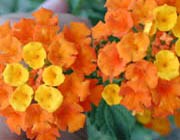
(John Labadie, Artist in Residence) Amistad National Recreation Area's flora contains elements from three major plant communities. This is due to our location in a transition zone between a more humid Gulf of America-influenced climate, the drier Chihuahuan Desert, and the hills of the Edwards Plateau. This multi-faceted environment with accompanyong transition zones results in a rich diversity of wildlife and vegetation, so various scientists monitor Amistad. A report on the plant species of Amistad National Recreation Area was compiled by botanists from Texas Parks & Wildlife Department, with funding from the National Park Service. (Access granted by the author and the publisher.) As new plant species are documented in the park, staff keep the species list updated, and the National Park Service also maintains a Vegetation Inventory and Map. Tamaulipan ShrublandThe park's region is at the western limits of a Gulf of America-influenced climate. Plants common to the southeast, from the state of Tamaulipas, Mexico, are at their northern and western limits. These plants have adapted to a very irregular precipitation pattern with frequent high humidity. The Tamaulipan Shrubland is characterized by the many species of acacia; including huisache, blackbrush, and guajillo (scientific names can be found in our Field Guide section). Cenizo, mesquite, and retama are other species typical of this more tropical flora. Chihuahuan DesertMany plants from the Chihuahuan Desert have their eastern limits in the Amistad area. Creosote bush, lechuguilla, and a variety of cactus species are good examples. By the time you reach the Big Bend region, the vegetation consists of true desert species. Edwards PlateauSome species, like oaks and junipers (cedars), are occasionally found around the reservoir, especially in the upper reaches of the Devils River. They represent Edwards Plateau flora from the north. The Edwards Plateau is also known as the Texas Hill Country. The Herbarium at Amistad National Recreation AreaThe plants of Amistad National Recreation Area help define the landscape of the park. Over 700 plant species have been identified here! How are specimens preserved?Park personnel and other researchers often collect plants during scientific field work. The plant specimens are prepared for permanent storage in a herbarium by drying them and attaching them to special paper with glue. The prepared herbarium collections are stored in sealed cabinets in the park’s museum building. The collections of dried plants and the information about each specimen provide park scientists and managers with information useful in making decisions for protecting the park’s resources. How are specimens chosen?A sprig of a stem, a flower, or a leaf is usually not enough for a botanist to include in a herbarium collection. The best herbarium specimen will have flowers or fruits along with stems, leaves, and sometimes, depending on the kind of plant, roots as well. But without the flowers or fruits, a plant collection is not complete. To be most useful, the information about the plant must include where and when the plant was collected, the name of the person who made the collection, and a brief description of the plant itself. Suggested References:
|
Last updated: April 21, 2025
